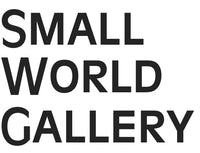Without Glass
“Without glass, the world would be unrecognizable.”
So wrote Douglas Main in his fascinating April 2018 piece for The Atlantic. From hair-thin glass strands that allow signals of light to move through undersea and underground cable to the rugged smart phones faces, glass of today is made in more than 350,000 formulas. Each has special optical or structural properties that make our world, well, recognizable.
In a passage that particularly caught my eye, the writer recounted that glass was a serious business in the Roman Empire. Several thousand years after glassmaking had been invented, glass bottles and jars had become a mainstay of the Italy-to-China Silk Road trade by 600 AD. They were not only produced to transport ointments and oils, but also as containers used in daily life. These containers were not fine glass containing light-shifting silver and gold nanoparticles — as in the 4th century's Lycyrgus cup now in London’s British Museum. The Silk Road’s bottles and jars were concocted of the most basic ingredients including sand, lime and soda. And fire — just the right temperature. And the right amount of human breath to expand and shape it.
This glass was viewed as no less magical by the average person than the finest specimens of fine glass behind guarded doors.
It is amazing to think, then, that chunks of this very same utilitarian Late Roman Empire glass have found their way to the workbench of IBISwoman Jewelry. In the 21st century. In a small town on America’s Great Plains.
That is because today enterprising descendants of ancient glassmakers have excavated around the many Silk Road glass shacks. The seekers find buried piles of cast-off glass objects — flawed, broken, discarded and left to crust over for hundreds of years. Local clans — ours come from Tajikistan — cut and drill this glass into beads for use in jewelry design.
That’s why it’s still amazing to lay hands on this late Roman Era glass and work it into wearable creations for you. Yes, our world would be unrecognizable without mirrors, huge walls of windows, beakers for modern chemistry, and lenses for eyeglasses, microscopes and telescopes alike. But it is a chunk of ancient glass — made in wood- and -coal fired chimneys on dirt floors — helps us look over our shoulder to recognize humanity’s path to today.
Visit our Ancient Glass Jewelry Collection....
Visit Kathy's last post about our Ancient Glass Beads....

|
 |
 |
 |

